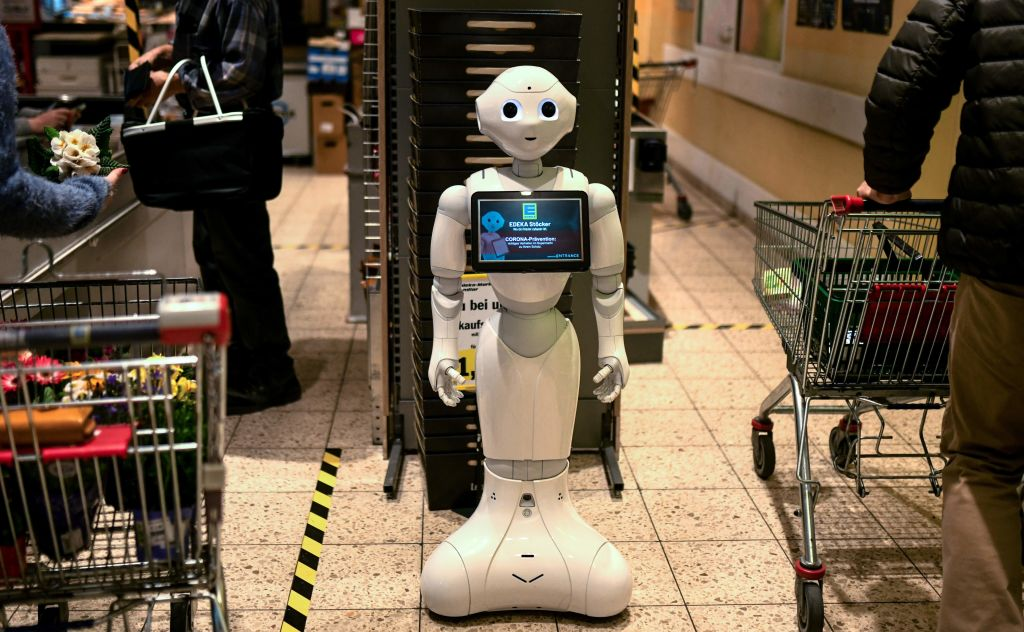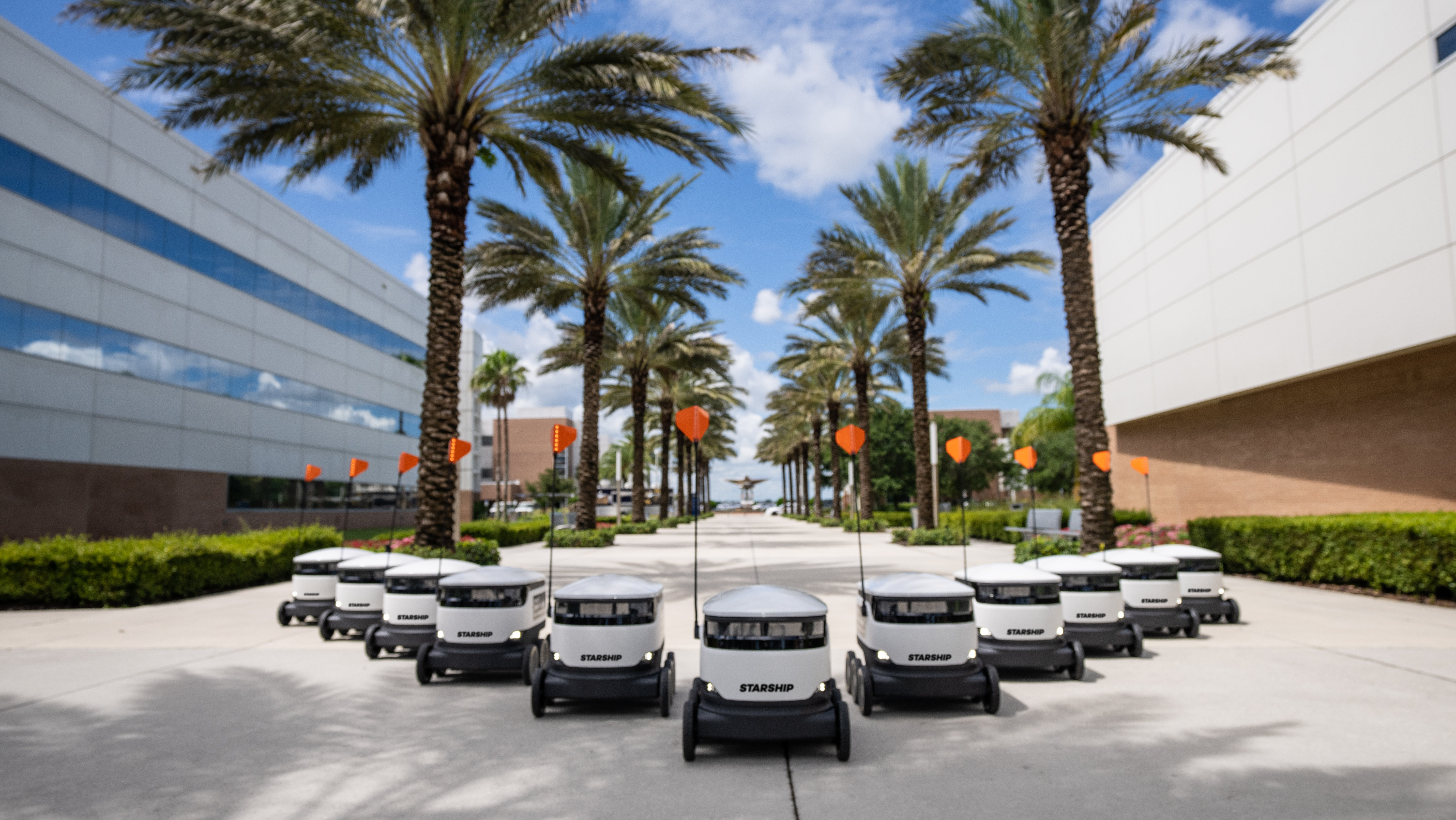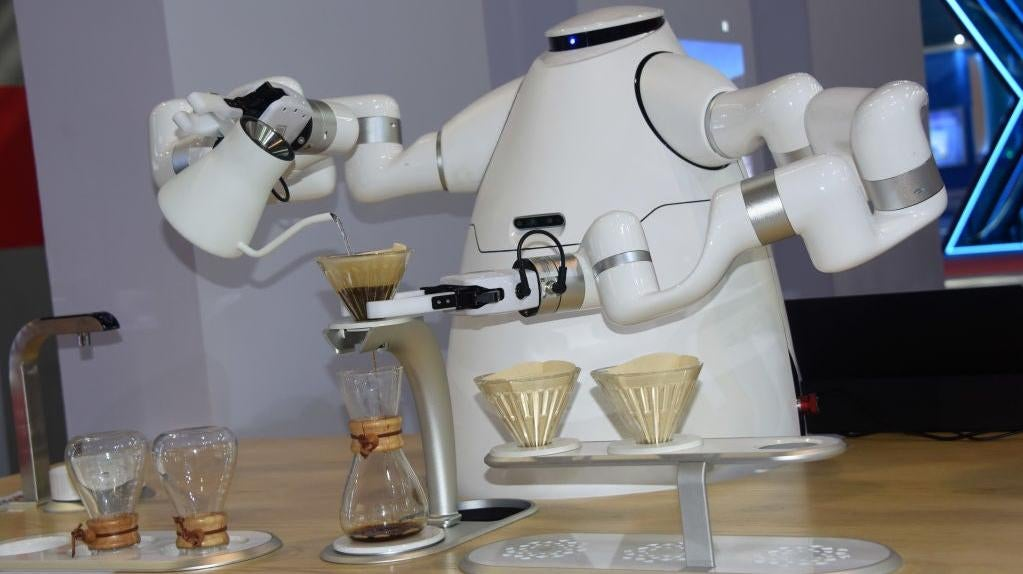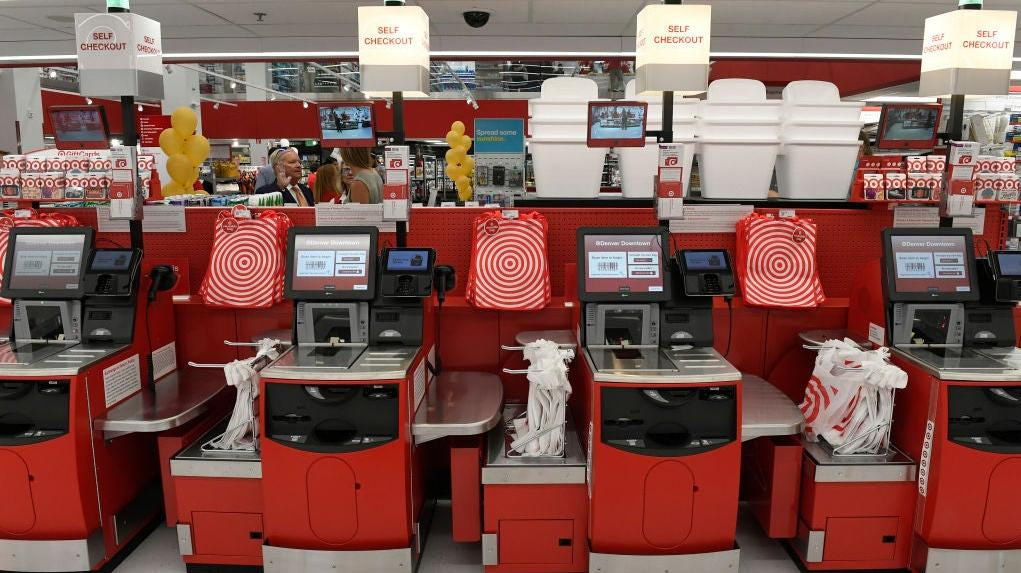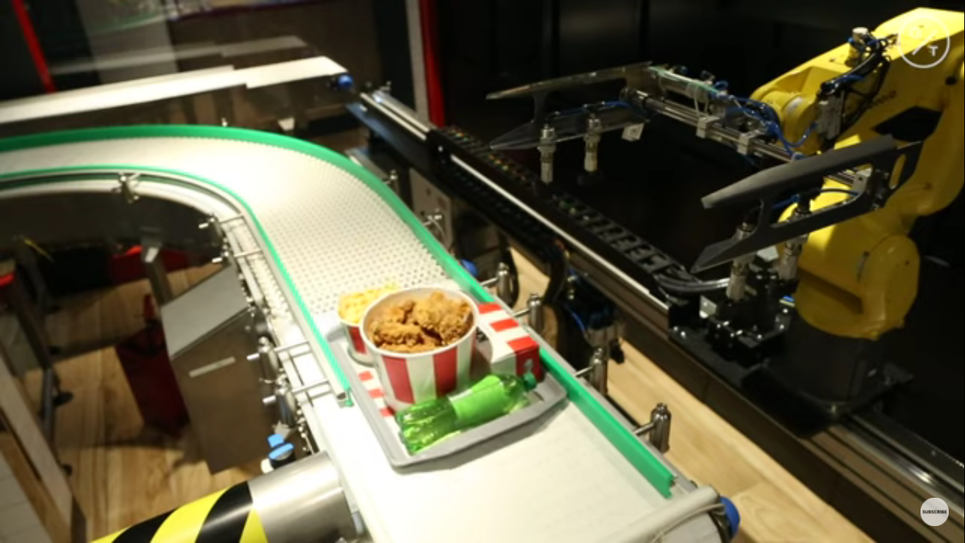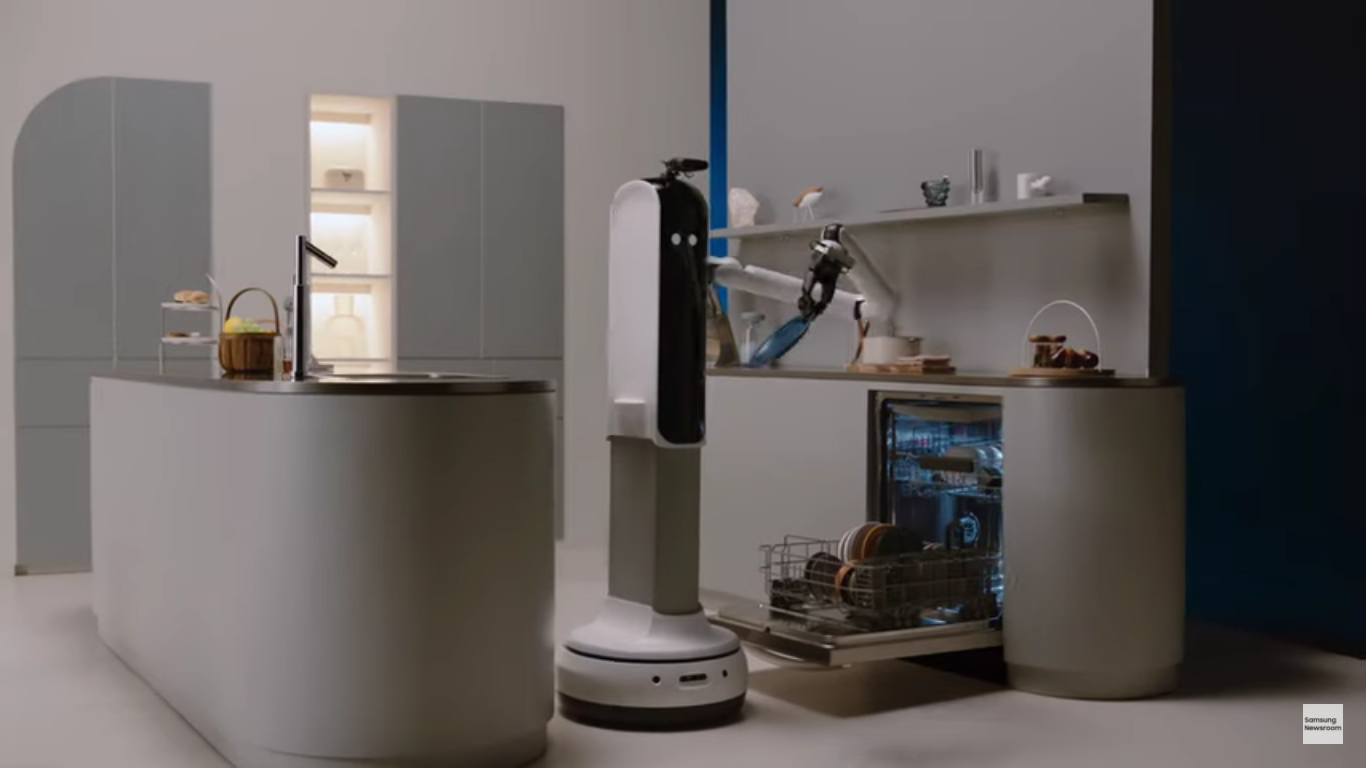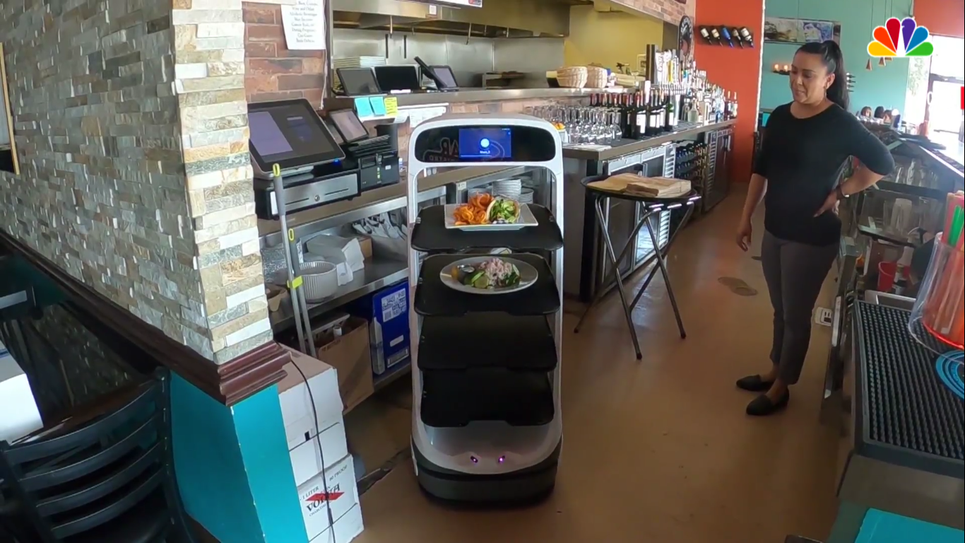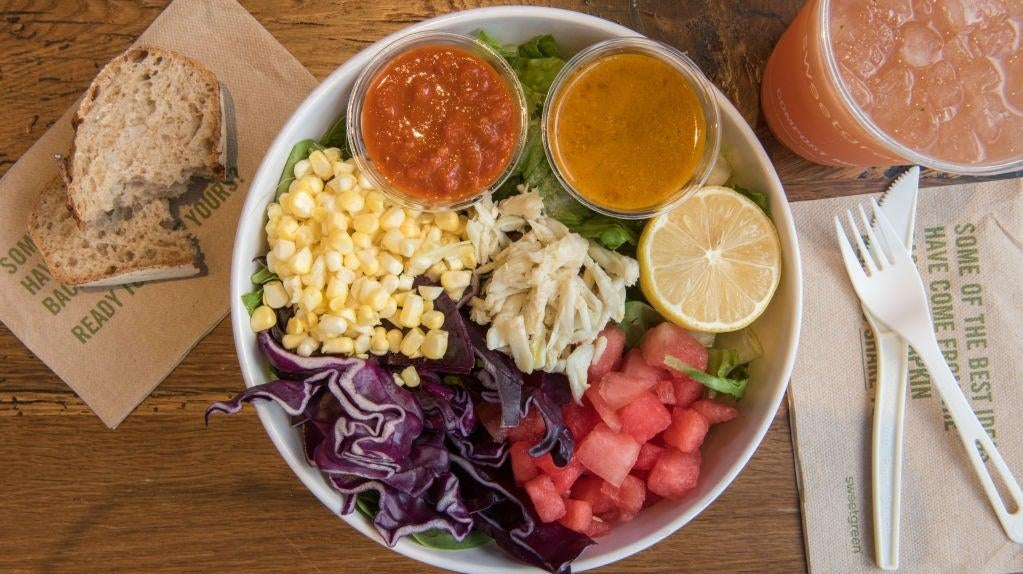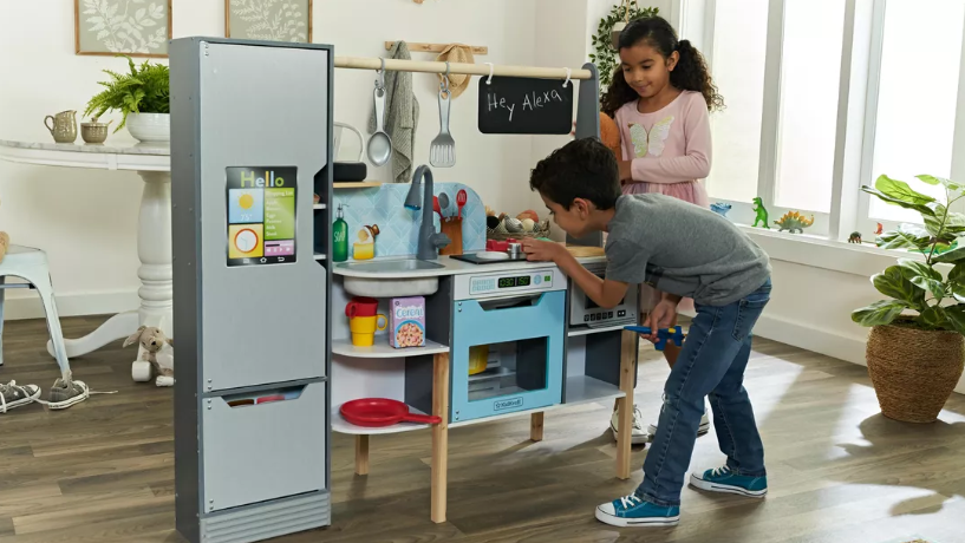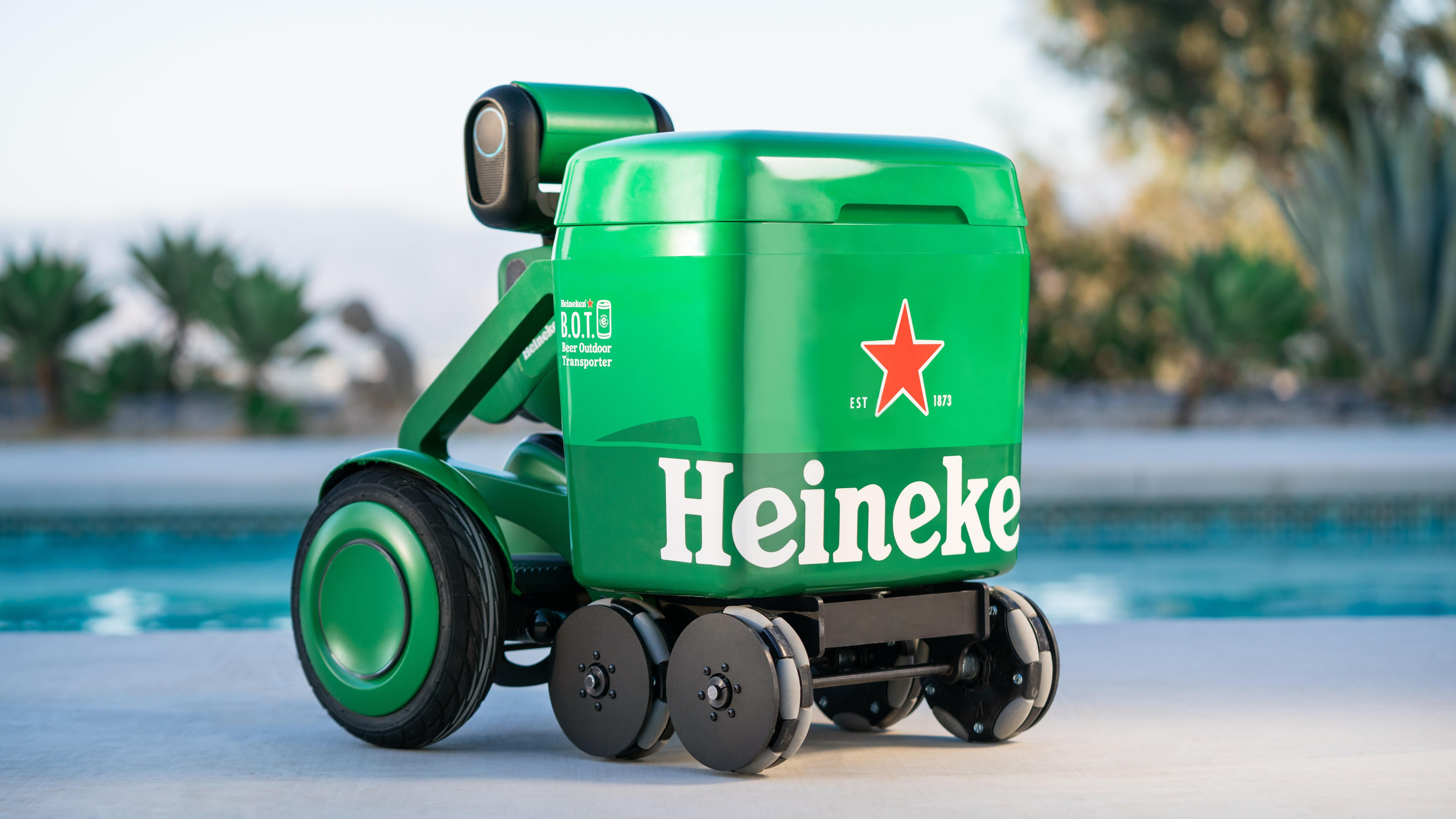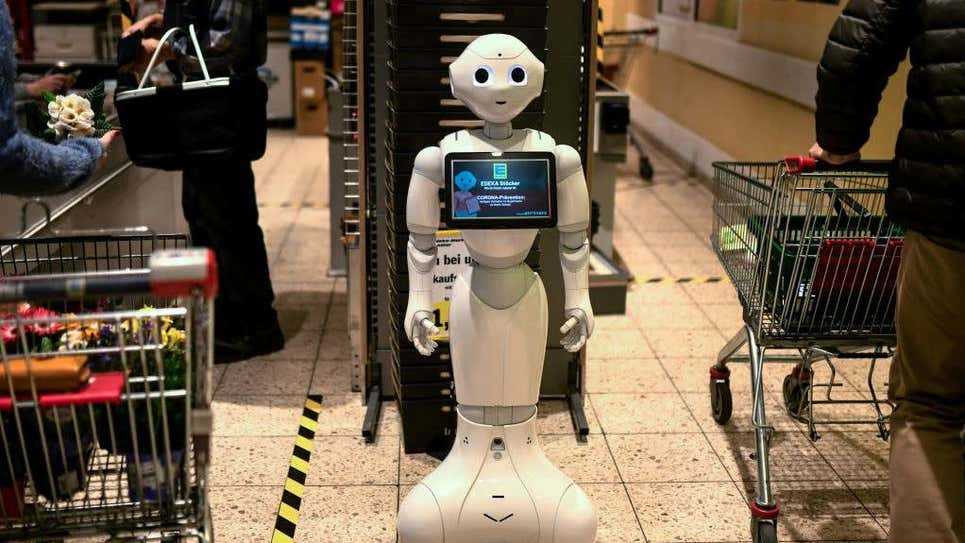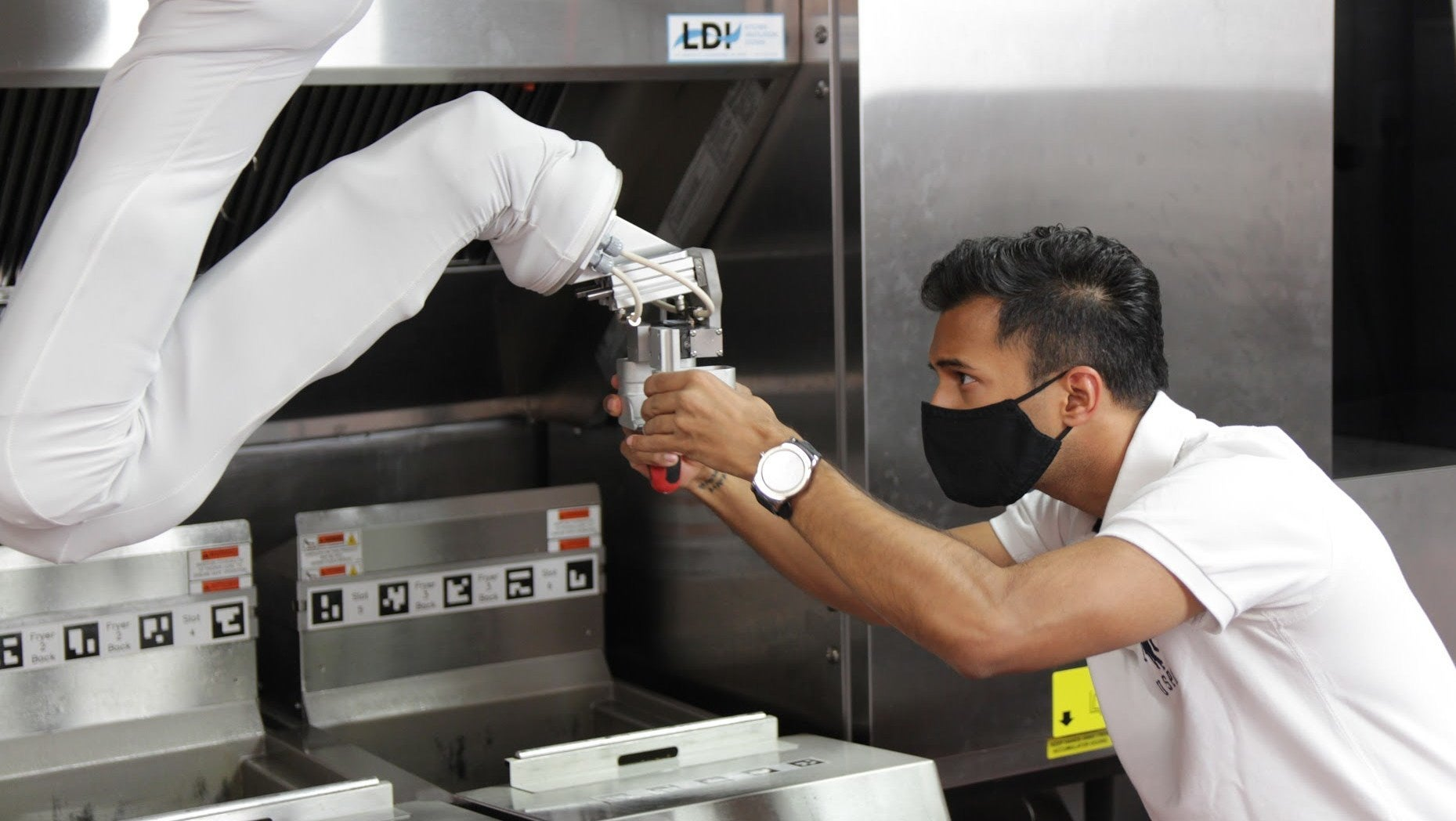12 Mildly Terrifying Ways That Robots Are Changing How We Eat
How robotic technology is preparing our food, serving our meals, and encouraging us to spend money.
The food industry is one of the main points through which robotic technology is infiltrating society. That's why The Takeout is dedicated to informing readers about the many ways robots are "helping" to make our lives "easier." They may promise added convenience, and their makers claim they can save us from menial tasks like cleaning our houses or talking to our children. But for all the benefits these robots bring, there are often hefty downsides, like worker displacement and plain ol' technical glitches. Here are some recent developments that show how robots are colliding with the food sector.
Food delivery robots infiltrate college campuses
Even when these robots are cute as a button, it's important to view them with a sense of trepidation, such as these ultra-friendly delivery robots making their way toward America's college campuses.
Autonomous delivery robots have been unleashed at universities from coast to coast, delivering food from campus cafes and restaurants directly to hungry students, faculty, and other robot-curious visitors. Let's hope the students at those universities are all working toward advanced degrees in robot sciences, because we'll need their beautiful minds to save us when the streets are flooded with delivery bots gone wild. Read more about this growing robot army here.
Robots might gain the skills to become our baristas
Scalding hot coffee is just as dangerous to robots as it is to humans, so it's best not to spill any on yourself, whether you're man or machine. Humans' ability to balance containers full of hot liquid while moving around is, apparently, a very impressive feat of cognition that's not entirely understood. Scientists are currently trying to figure out how to design robots that can mimic these behaviors, because once the robots have mastered "complex object control," what can't they accomplish? Read more about how scientists are giving robots the ability to run around with hot containers of liquid here.
Robots assist us in buying candy and snacks we don’t need
In an era where grocery shopping is increasingly taking place via online ordering, curbside pickup, and self-checkout, how will the candy and snack industry keep plying us with frivolous little last-minute treats? By using a tireless in-store robot salesman named Smiley, who uses "shopping-enhancing features" to help push customers to make more impulse buys while purchasing groceries. Read more about Smiley the robot here.
KFC robot delivers orders via facial recognition software
In KFC's automated service system in Moscow, installed in 2020, the only set of hands to ever touch the chicken is the customer's. After a person's order is prepared and transported via conveyor belt, a robot arm transports the order to a special heated cell that can only be opened by the customer via facial recognition technology, which is definitely the sort of personal information you want to voluntarily submit to a massive fast food conglomerate. Read more about this "fun" sterile chicken-preparing robot here.
This Samsung robot loads the dishwasher for you
If there's any reason to consider pledging fealty to robots, it's a friendly little fellow called the Bot Handy, which can clean the sink and load the dishwasher after a meal. The Samsung robot is being developed using advanced AI technology that can scan and identify any object in its path, then move said object based on its material composition. The Bot Handy could potentially become a sort of robot sidekick, a loyal companion that spends its days making our lives easier. But if you have the money for the Bot Handy, you probably already pay someone else to do your dishes, right? Read more about the only good robot here.
Robotic restaurant servers could become commonplace
Scary as they can sometimes often be, the initial idea for robots was not to create an army of technobeasts intent on upending civilization and destroying the human race, but to help humans by reducing our need to do tedious jobs. Take, for example, restaurant servers, who work hard for atrocious wages. It should come as no surprise to anyone that servers are not exactly clamoring to return to their pre-pandemic jobs, and restaurants are having trouble finding people to wait tables. A number of restaurants are turning to robots to solve the issue—not to replace servers, but to assist them in bringing food to each table. Read more about these restaurant robots here.
Robots will assemble that Harvest Bowl for you
The robots are coming for your salads, now that quick-service salad chain Sweetgreen has purchased Spyce, automated kitchen concept that uses robotic equipment and conveyor belts to assemble meals, no humans required. Sweetgreen might implement the Spyce system at more of its locations in the coming months, meaning you might soon specify your dressing preferences at a kiosk rather than meekly asking an employee to go heavier on the balsamic. Read more about robosalads here.
Amazon Alexa teaches children about cooking, kind of
Amazon has developed an Alexa-integrated play kitchen in conjunction with KidKraft. It has over 700 voice commands, and RFID sensors embedded into the kitchen and accessories communicate via Bluetooth to an Alexa device. Put a hot dog in a saucepan on the stove, and Alexa will make a splash sound effect to simulate it being dropped into water, and then set an automatic timer to let the child know when their meal is ready. It's a few hundred bucks and probably takes 17 hours to put together, but at least it teaches your kid how to cook so you don't have to. Read more about Amazon's robotic play kitchen here.
The Heineken beer bot brings you a cold one on command
Robots are cunning, and know exactly how to manipulate us. Case in point: the B.O.T. (or Beer Outdoor Transporter), an adorable little robot from Heineken that is not only cute and helpful, but involves beer delivery, providing victims consumers a positive association with intelligent machines. The B.O.T. was the grand prize in a summer 2021 sweepstakes, so the influence of this sort of groundbreaking technology remains limited for now. See this manipulative beer-toting cutie-pie in action here.
Robot noses might help us prevent food waste
A team of scientists led by Nanyang Technological University, Singapore (NTU Singapore) has invented an "artificial olfactory system" that "mimics the mammalian nose" to assess meat freshness. Yep, it's a fake nose that can help you figure out if you really need to toss that four-day-old chicken breast. This could help people avoid food waste by making sure they don't trash perfectly good groceries. The technology can even be integrated into a smartphone app, so maybe we'll all be using this artificial sniff test in a few years. Learn more about how it works here.
Grocery store robots became more common during the pandemic
The coronavirus pandemic presented an opportunity for supermarkets to adapt to a no-contact world. Both large national chains and small local independent grocery stores began using autonomous robots to make deliveries, scrub floors, and ostensibly alleviate overburdened employees by allowing them to do customer service stuff rather than the busy work. Seeing the writing on the wall, some major supermarket chains even used these robots to develop in-store "micro-fulfillment centers" to rival Instacart. Read more about how the robots inflitrated our supermarkets here.
Flippy the Robot is only the beginning
For years now, restaurant kitchens have been coming around on the idea of Flippy the Robot, a robotic arm that can flip burgers, man the fry baskets, and perform a number of other tasks typical of a fast food operation. Flippy is the invention of Miso Robotics, a company that has used its learnings about Flippy to build new and better robot technology for the service industry. Now, say hello to Flippy Wings, aka "Wingy," a robot specifically designed to assist kitchen staff at Buffalo Wild Wings. Currently being tested at an Inspire Brands innovation kitchen in Atlanta, Wingy can cook chicken wings and dispense them at a hot holding area with minimal oil spillage, potentially leading to greater safety and efficiency in the kitchen. If Flippy is capable of spawning Wingy, then it seems likely that Miso Robotics will start customizing its robots to perform all sorts of fast food kitchen tasks. Read more about Wingy here.
